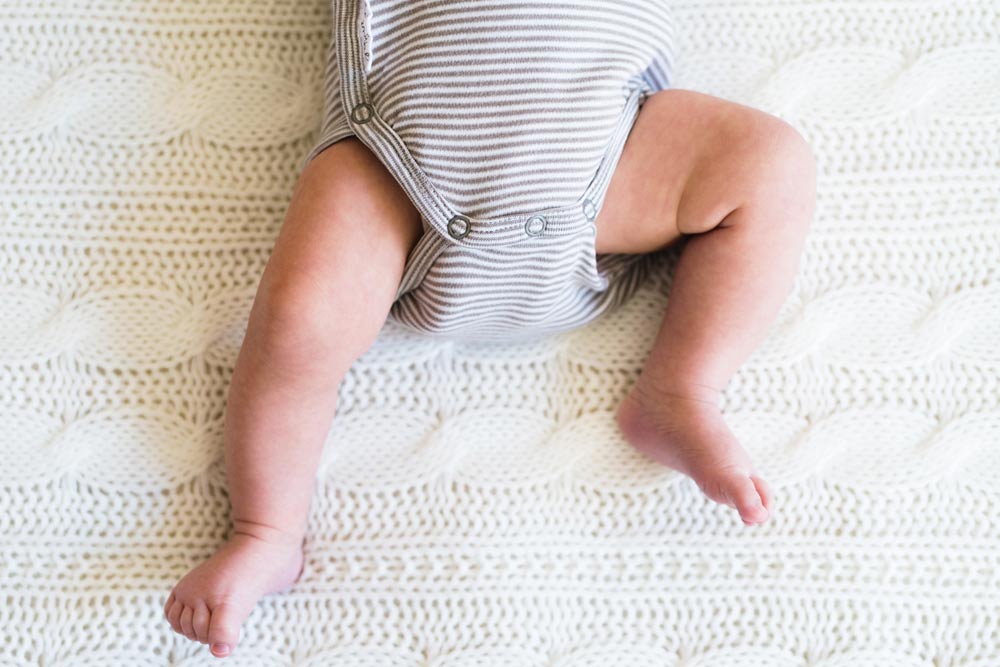How to Survive the 4-Month Sleep Regression

Jenelle Ferry, M.D., neonatologist and director of feeding, nutrition and infant development at Pediatrix Medical Group of Florida – Tampa Neonatology
Infant sleep is known to be a bit of a mystery for new and experienced parents alike, but no puzzle has a reputation quite like the 4-month sleep regression. Wreaking havoc on sleep cycles of otherwise sound snoozers for as long as we can remember, it’s no surprise that the term is one of the most searched topics on Google.
The sudden change in sleep patterns is usually attributed to a developmental milestone, and it can create drastic change in baby’s routine, as well as some hardship in your household as you navigate days (or weeks) with less sleep.
“It’s kind of like some internal switch gets turned on inside baby’s brain, and she is more aware of her surroundings and what’s going on. It’s not just baby suddenly forgetting how to sleep or regressing from sleep,” says Greta Zude, baby sleep consultant at My Baby Can Sleep.
This means that whatever tried-and-true method used up to this point for rest probably isn’t going to work as well moving forward. Zude explains that if you were breastfeeding or rocking your little one to sleep or using a pacifier, your baby is now “smarter” and not wanting those things, which are called “sleep crutches.” So now, more than ever, you have to consider teaching your baby how to go from fully wide awake to fully asleep without the help of anyone or anything and put her in the crib without the typical sleep associations.
Easier said than done, right? For help on how to do just that, we got the scoop on creating healthy sleep habits that will last beyond this current point in baby’s brain development from Jenelle Ferry, M.D., a neonatologist in Tampa, Florida. With these tips, her sleep routine will be back on track hopefully sooner than later.
What sleep training methods can be applied during this phase?
There are many different types of sleeping methods, including cry it out, the Ferber method, the chair method and the bedtime fading method. For all of these, the most important factor is consistency. Decide on a method you want to try and stick with it for at least a week. As mentioned before, sleep props like pacifiers can be helpful, but can also lead to night waking if they aren’t there (i.e. a pacifier falls out). Other sleep props can include white noise to block out competing noises and sleep bags and swaddles to make sure your baby stays warm and cozy. Establish a routine both for napping and nighttime sleep, and make sure to have appropriate wake up times in between. Plenty of floor time and playtime while awake can help your baby’s development and also get them ready for the next sleeping time.
How can parents encourage their child to practice self-soothing?
The 4 to 6 month mark is a great time for sleep training because your infant’s brain has developed to the point of being able to self-soothe, and they aren’t yet old enough to have established any bad habits that can attribute to sleep problems. Probably the most important first step is to ensure that when you put your little one down, they are sleepy but awake versus in a deep sleep. If your infant has been falling asleep at the breast or bottle, they may have more trouble self-soothing if they awake later in the night. Establish a solid bedtime routine if you haven’t and look for sleepiness cues like yawning or eye rubbing. It’s also important to avoid putting your baby to sleep overtired, as she will probably have a hard time achieving calm rest in this state.
How do growth spurts and teething factor in?
Any new situation or illness can disrupt sleep training for babies all months of age. During these periods, you may need to repeat previously successful sleep training routines. Teething can be a tricky one especially, as putting hands in mouth and drooling are also developmentally occurring without teething.
If you think your child may be sick, let your pediatrician know and follow their sleep instructions to ensure baby gets the rest she needs to recuperate.
How should new parents handle sudden fussiness in the middle of the night?
Moms and dads will all handle this differently, and there may be some tears involved for both baby and parents. If you know your infant isn’t sick or in a new environment, try to delay your response times as you try out your chosen sleep training method. Remember that you are helping your little one develop a new skill, and while “giving in” and getting them to sleep may keep the peace for everyone during a rough night, this isn’t actually the habit you’re trying to develop. Methods like the Ferber method or crying it out are likely to be successful after 3 to 4 consistent nights. Other methods may take longer. If any method is taking longer than two weeks, it’s time to try another or discuss with your child’s doctor.
Sleep training can be tough, but it’s worth it in the long run to ensure baby’s sleep habits are beneficial to her for life, and that everyone at home receives the hours of sleep needed during your wee one’s first year. Good luck!







